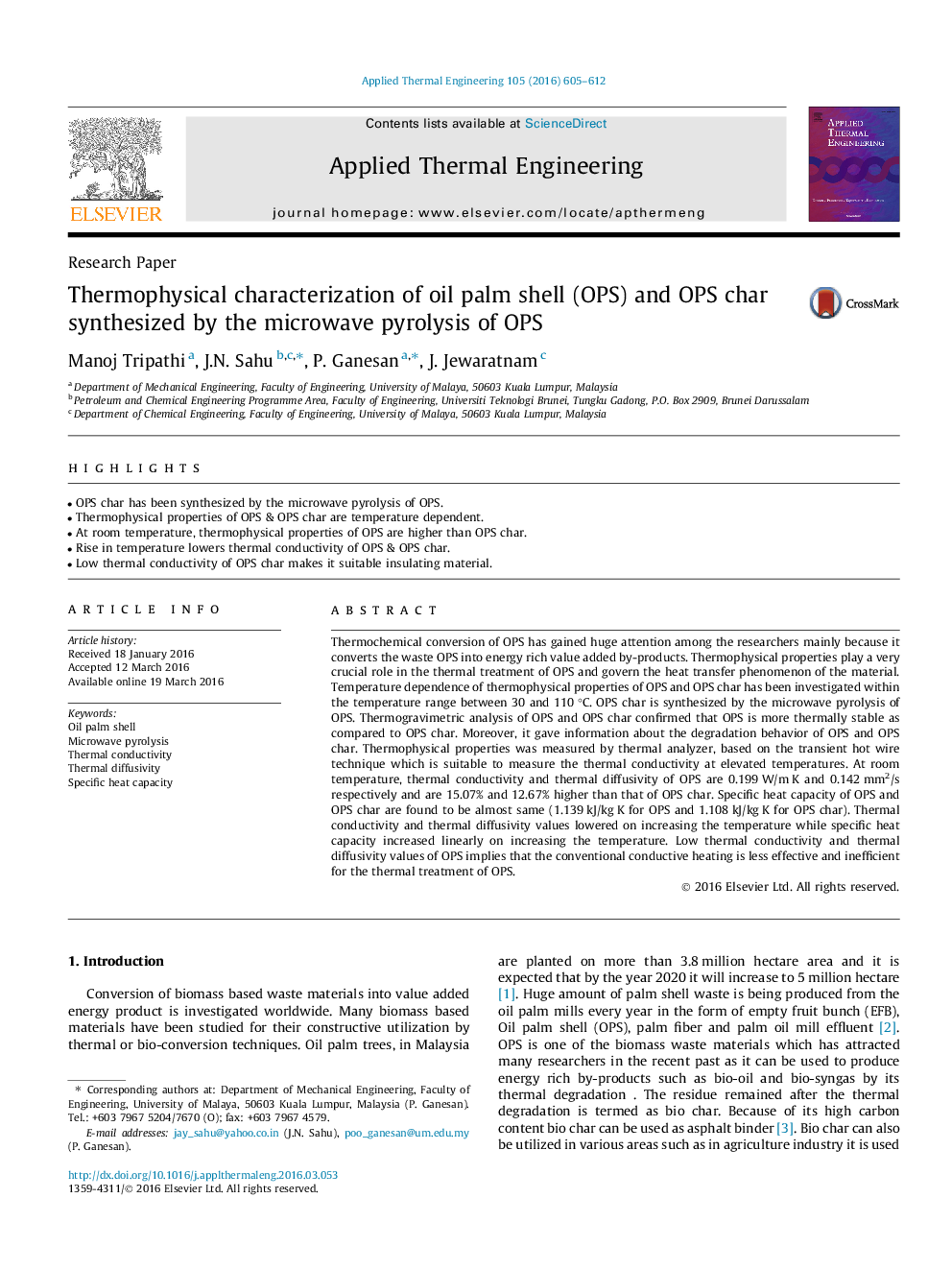| Article ID | Journal | Published Year | Pages | File Type |
|---|---|---|---|---|
| 644613 | Applied Thermal Engineering | 2016 | 8 Pages |
•OPS char has been synthesized by the microwave pyrolysis of OPS.•Thermophysical properties of OPS & OPS char are temperature dependent.•At room temperature, thermophysical properties of OPS are higher than OPS char.•Rise in temperature lowers thermal conductivity of OPS & OPS char.•Low thermal conductivity of OPS char makes it suitable insulating material.
Thermochemical conversion of OPS has gained huge attention among the researchers mainly because it converts the waste OPS into energy rich value added by-products. Thermophysical properties play a very crucial role in the thermal treatment of OPS and govern the heat transfer phenomenon of the material. Temperature dependence of thermophysical properties of OPS and OPS char has been investigated within the temperature range between 30 and 110 °C. OPS char is synthesized by the microwave pyrolysis of OPS. Thermogravimetric analysis of OPS and OPS char confirmed that OPS is more thermally stable as compared to OPS char. Moreover, it gave information about the degradation behavior of OPS and OPS char. Thermophysical properties was measured by thermal analyzer, based on the transient hot wire technique which is suitable to measure the thermal conductivity at elevated temperatures. At room temperature, thermal conductivity and thermal diffusivity of OPS are 0.199 W/m K and 0.142 mm2/s respectively and are 15.07% and 12.67% higher than that of OPS char. Specific heat capacity of OPS and OPS char are found to be almost same (1.139 kJ/kg K for OPS and 1.108 kJ/kg K for OPS char). Thermal conductivity and thermal diffusivity values lowered on increasing the temperature while specific heat capacity increased linearly on increasing the temperature. Low thermal conductivity and thermal diffusivity values of OPS implies that the conventional conductive heating is less effective and inefficient for the thermal treatment of OPS.
